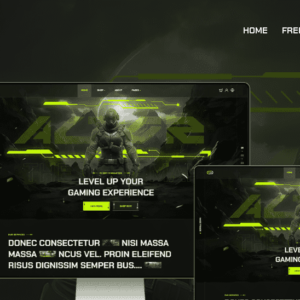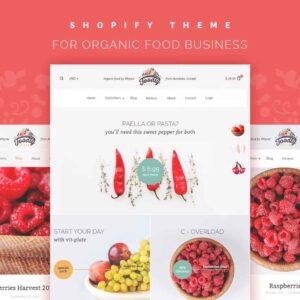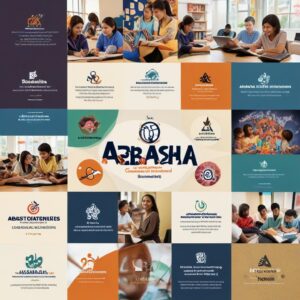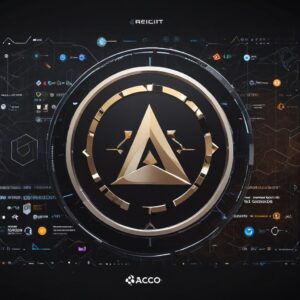
Best Free Prompt to AI Image Generators for Businesses in 2024
AI Image Generators for Businesses
Introduction to AI Image Generators
AI image generation technology has revolutionized the way we create and manipulate visual content. By leveraging advanced machine learning algorithms, these tools can generate realistic images from scratch or modify existing ones based on specific inputs. This technology is not only fascinating but also incredibly useful across various industries.
AI image generators utilize deep learning and neural networks to analyze vast datasets of images. These systems learn the patterns, styles, and features that define different types of images. Once trained, they can produce new images that are remarkably similar to those in the training data. Techniques such as Generative Adversarial Networks (GANs) and neural style transfer are commonly used in this field.

For businesses, AI image generators offer numerous advantages. They can significantly reduce the time and cost associated with creating high-quality visual content. For instance, in marketing, these tools can generate compelling images for advertisements, social media posts, and product designs quickly and efficiently. This capability allows businesses to maintain a consistent and engaging visual presence without the need for extensive human intervention.
Moreover, text to AI image generators can transform textual descriptions into vivid images, making it easier for businesses to visualize concepts and ideas. This is particularly useful in fields like e-commerce, where product descriptions can be converted into realistic images, enhancing the shopping experience for customers.
Table of Contents
Understanding AI Image Generators
AI image generators are a fascinating blend of technology and creativity. Let’s delve deeper into their workings and applications.
How Do AI Image Generators Work?
AI image generators use complex algorithms, primarily deep learning models, to create images. Here’s a more detailed look at their functionality:
- Training Phase: The AI model is trained on a large dataset of images. This dataset can include millions of images, covering various styles, objects, and scenes. The model learns to recognize patterns, textures, and features within these images.
- Generation Phase: Once trained, the model can generate new images. It uses the patterns and features it learned during training to create visuals that are similar in style and content to the training data. This can be done in several ways:
- From Scratch: The model generates an entirely new image based on random noise that it refines into a coherent picture.
- Modification: The model can alter an existing image by adding new elements or changing certain features.
Applications of AI Image Generators
AI image generators have a wide range of applications across different industries:
- Marketing and Advertising: Businesses can quickly create high-quality visuals for campaigns, social media, and product designs.
- Entertainment: In the film and gaming industries, AI can generate realistic backgrounds, characters, and special effects.
- E-commerce: Online retailers can use AI to generate product images from descriptions, enhancing the shopping experience.
- Art and Design: Artists and designers can use AI to explore new creative possibilities and generate unique artworks.
Benefits of AI Image Generators
The benefits of using AI image generators are numerous:
- Efficiency: They can produce images much faster than traditional methods.
- Cost-Effective: Reduces the need for extensive human labor in image creation.
- Consistency: Ensures a uniform style and quality across all generated images.
- Innovation: Opens up new creative possibilities that were previously unimaginable.
AI image generators are a rapidly evolving technology with profound implications for various fields. Let’s dive even deeper into their mechanisms and potential.
Advanced Mechanisms of AI Image Generators
- Generative Adversarial Networks (GANs): One of the most popular techniques used in AI image generation is GANs. This involves two neural networks, the generator and the discriminator, working together. The generator creates images, while the discriminator evaluates them against real images. Through this adversarial process, the generator improves its ability to produce realistic images.
- Variational Autoencoders (VAEs): Another technique is VAEs, which encode images into a latent space and then decode them back into images. This method allows for the generation of new images by sampling from the latent space, providing a controlled way to create variations of images.
- Neural Style Transfer: This technique involves taking the style of one image and applying it to the content of another. For example, you can take the style of a famous painting and apply it to a photograph, creating a unique blend of both.
Real-World Applications
- Healthcare: AI image generators can create synthetic medical images for training purposes, helping doctors and medical students practice without the need for real patient data.
- Fashion: Designers can use AI to generate new clothing designs, visualize them on virtual models, and even predict fashion trends.
- Architecture: Architects can quickly generate visualizations of buildings and interiors based on textual descriptions or rough sketches, aiding in the design process.
Ethical Considerations
While AI image generators offer numerous benefits, they also raise important ethical questions:
- Copyright and Ownership: Who owns the images generated by AI? This is a complex issue, especially when the AI is trained on copyrighted material.
- Deepfakes: The ability to create highly realistic images and videos can be misused to create deepfakes, which can spread misinformation and harm individuals.
- Bias in AI: If the training data is biased, the generated images can also reflect these biases, leading to unfair or harmful representations.
Future Prospects
The future of AI image generators is incredibly promising. As technology advances, we can expect even more sophisticated and versatile tools. Potential developments include:
- Improved Realism: Future models will likely produce images that are indistinguishable from real photographs.
- Interactive Generation: Users might be able to interact with AI in real-time to create and modify images, making the process more intuitive and user-friendly.
- Cross-Modal Generation: Combining different types of data, such as text, audio, and images, to create more comprehensive and immersive experiences.
By continuing to explore and understand text to AI image generators, we can harness their full potential while addressing the ethical challenges they present. This technology is set to revolutionize the way we create and interact with visual content, opening up new horizons for innovation and creativity.
Benefits for Businesses
Cost-effectiveness
Traditional image creation often requires hiring professional graphic designers or purchasing expensive software. These costs can add up quickly, especially for small businesses or startups. AI image generators, however, offer a more affordable alternative. By using text to AI image generators, businesses can create high-quality visuals without the need for extensive resources. This cost-saving aspect allows businesses to allocate their budget to other critical areas, such as marketing or product development.
Time-saving
The process of creating images manually can be time-consuming. It involves brainstorming ideas, creating drafts, and going through multiple rounds of revisions. AI image generators streamline this process by producing images almost instantly from text prompts. This rapid generation of visuals means businesses can quickly adapt to market trends, launch campaigns faster, and respond to customer needs more efficiently. The time saved can be redirected towards strategic planning and other essential business activities.
Enhanced creativity
AI image generators are not limited by human imagination. They can produce a vast array of unique and innovative images based on the input they receive. This opens up new creative possibilities for businesses. For instance, a company can experiment with different styles and concepts without the constraints of traditional design methods. The ability to generate images from text descriptions also means businesses can easily create visuals that are tailored to specific campaigns or branding efforts. This level of customization helps in creating a strong and consistent brand identity.
Why Businesses Should Use AI Image Generators
Incorporating AI image generators into business operations offers numerous advantages. These tools are not only cost-effective and time-saving but also enhance the creative process. By leveraging text to AI image generators, businesses can produce compelling visual content that stands out in a crowded market. This technology enables companies to be more agile, innovative, and efficient, ultimately leading to better engagement with their audience and improved business outcomes.
Top Free AI Image Generators in 2024
In 2024, the landscape of AI image generation has expanded significantly, offering a variety of tools that cater to different needs. Here’s a detailed outline of the best free AI image generators available this year.
1. Microsoft Designer’s Image Creator
Powered by DALL-E 3, this tool stands out for its accuracy, speed, and cost-effectiveness. It generates high-quality images in seconds and is entirely free to use with a Microsoft account. Ideal for both professionals and casual users, it excels in producing detailed and lifelike images from text prompts.
2. DALL-E 3
Created by OpenAI, DALL-E 3 is a significant upgrade from its predecessor. It integrates text into images seamlessly, solving a long-standing challenge in AI image generation. Available for free through Bing Chat, it’s perfect for creative professionals and brands looking to visually represent their vision.
3. Imagen 3 by Google
Part of Google’s Gemini AI platform, Imagen 3 is designed to rival other top-tier AI image generators. It offers high-resolution outputs and a streamlined workflow, making it a strong contender in the market. This tool is particularly useful for users within the Google ecosystem.
4. Stability AI’s DreamStudio
Known for its customization options, DreamStudio allows users to fine-tune their image generation process. It’s a versatile tool that caters to both beginners and advanced users, providing a range of features to enhance creativity.
5. Wombo Dream
Detailed Reviews of Top AI Image Generators
Tool 1: DALL-E 3
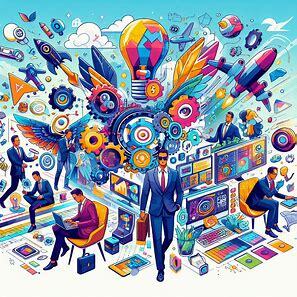
Features:
| Feature | Description |
|---|---|
| Text to AI Image Generators | Seamlessly integrates text into images |
| High Resolution | Produces high-quality, detailed images |
| User-Friendly Interface | Easy to use for both beginners and professionals |
Pros and Cons:
| Pros | Cons |
|---|---|
| 🌟 High-quality image output | 💸 Limited free usage |
| 🚀 Fast processing time | 🌐 Requires internet connection |
| 🎨 Versatile and creative | 📈 High demand can slow down service |
Tool 2: Microsoft Designer’s Image Creator
Features:
| Feature | Description |
|---|---|
| Text to AI Image Generators | Generates images from text prompts |
| Integration with Microsoft Products | Works seamlessly with other Microsoft tools |
| Free Access | Available for free with a Microsoft account |
Pros and Cons:
| Pros | Cons |
|---|---|
| 🌟 Free to use | 💻 Requires Microsoft account |
| 🔄 Integrates well with Microsoft ecosystem | 📉 Limited customization options |
| 🖼️ High-quality images | 🌐 Internet connection needed |
Tool 3: GravityWrite
Features:
| Feature | Description |
|---|---|
| Text to AI Image Generators | Converts text prompts into images |
| Customizable Outputs | Allows for extensive customization |
| User-Friendly | Easy to navigate and use |
Pros and Cons:
| Pros | Cons |
|---|---|
| 🌟 Highly customizable | 💸 Limited free features |
| 🎨 Creative and versatile | 🌐 Requires internet connection |
| 🚀 Fast and efficient | 📈 High demand can affect performance |
These detailed reviews of top AI image generators highlight their unique features, pros, and cons. Whether you need high-quality images, seamless integration, or extensive customization, these tools offer powerful solutions for your text to AI image generation needs.
How to Use AI Image Generators
Here’s a step-by-step guide on how to use some of the top AI image generators. Each tool is explained in detail to help you get started quickly and efficiently.
Tool 1: DALL-E 3
Step-by-Step Guide:
- Access the Tool: Visit the DALL-E 3 website or use it through Bing Chat.
- Sign In: Create an account or log in if you already have one.
- Enter Text Prompt: Type your desired text into the input box. Use descriptive language for better results.
- Generate Image: Click the “Generate” button to create your image.
- Review and Edit: Review the generated image. You can make adjustments or regenerate if needed.
- Download: Once satisfied, download the image to your device.
Text to AI Image Generators like DALL-E 3 are intuitive and user-friendly, making it easy to create stunning visuals.
Tool 2: Microsoft Designer’s Image Creator
Step-by-Step Guide:
- Access the Tool: Open Microsoft Designer or access it through your Microsoft account.
- Sign In: Log in with your Microsoft credentials.
- Enter Text Prompt: Input your text prompt in the designated area.
- Generate Image: Click on the “Generate” button to create your image.
- Customize: Use the available tools to customize your image as needed.
- Save and Share: Save the image to your device or share it directly through Microsoft platforms.
Using text to AI Image Generators like Microsoft Designer’s Image Creator is seamless, especially if you are already within the Microsoft ecosystem.
Tool 3: GravityWrite
Step-by-Step Guide:
- Access the Tool: Visit the GravityWrite website.
- Sign Up: Create an account or log in if you already have one.
- Enter Text Prompt: Type your text prompt into the input field.
- Generate Image: Click the “Generate” button to create your image.
- Customize: Use the customization options to tweak your image.
- Download: Download the final image to your device.
Text to AI Image Generators like GravityWrite offer extensive customization options, making it a versatile tool for various creative needs.
These step-by-step guides provide detailed instructions on using some of the best AI image generators available. Whether you’re using DALL-E 3, Microsoft Designer’s Image Creator, or GravityWrite, these tools make it easy to transform text into stunning images.
Best Practices for Effective Prompt Creation
Creating effective prompts for AI image generators can significantly enhance the quality of the generated images. Here are some best practices to help you write effective prompts and avoid common mistakes.
Tips for Effective Prompt Creation
- Be Specific: The more detailed your prompt, the better the output. Instead of saying “a dog,” try “a golden retriever puppy playing in a sunny park.”
- Use Descriptive Language: Incorporate adjectives and adverbs to paint a clearer picture. For example, “a serene, moonlit beach with gentle waves.”
- Include Context: Providing context helps the AI understand the setting and mood. For instance, “a futuristic cityscape at night with neon lights.”
- Experiment with Styles: Mention specific art styles or influences, like “in the style of Van Gogh” or “a minimalist design.”
- Iterate and Refine: Don’t hesitate to tweak your prompts based on the initial results. Small changes can lead to significant improvements.
Using these tips with text to AI Image Generators can help you achieve more accurate and visually appealing results.
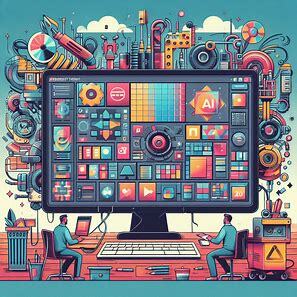
Common Mistakes to Avoid
- Being Too Vague: Avoid generic prompts like “a cat.” Instead, specify details such as “a black cat with green eyes sitting on a windowsill.”
- Overloading with Details: While details are important, too many can confuse the AI. Balance specificity with clarity.
- Ignoring Context: Failing to provide context can lead to irrelevant or mismatched images. Always set the scene.
- Neglecting Style: Not mentioning a preferred style can result in generic outputs. Specify if you want a particular artistic influence.
- Not Reviewing Outputs: Always review and refine your prompts based on the generated images. Continuous improvement is key.
By following these best practices and avoiding common mistakes, you can create more effective prompts for text to AI Image Generators. This will help you generate high-quality, visually appealing images that match your vision.
Case Study
Case Study 1: E-commerce Personalization
Company: Amazon
Challenge: Amazon wanted to enhance the shopping experience by providing personalized product recommendations.
Solution: By integrating text to AI Image Generators, Amazon created dynamic product images tailored to individual user preferences. This approach utilized browsing history and purchase patterns to generate images that resonated with each customer.
Outcome: This personalization led to a significant increase in cross-selling and upselling opportunities, boosting overall sales.
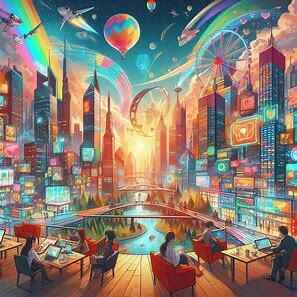
Case Study 2: Virtual Try-Ons in Beauty Industry
Company: Sephora
Challenge: Sephora aimed to reduce the gap between online and in-store shopping experiences.
Solution: Sephora implemented a text to AI Image Generator called Virtual Artist. This tool allowed customers to try on makeup virtually, generating realistic images based on user input.
Outcome: The tool increased customer engagement and sales, as users were more confident in their purchases.
Case Study 3: Enhancing Marketing Campaigns
Company: Nike
Challenge: Nike needed to create visually appealing and personalized marketing content quickly.
Solution: Using text to AI Image Generators, Nike automated the creation of customized marketing images. These images were tailored to different demographics and regions, ensuring relevance and appeal.
Outcome: The efficiency and effectiveness of Nike’s marketing campaigns improved, leading to higher customer engagement and conversion rates.
Case Study 4: Real Estate Virtual Staging
Company: Zillow
Challenge: Zillow wanted to help potential buyers visualize properties with different interior designs.
Solution: Zillow used text to AI Image Generators to create virtual staging images. These images showcased various design options, helping buyers imagine the potential of each property.
Outcome: This innovation led to faster property sales and higher customer satisfaction.
Case Study 5: Fashion Design Automation
Company: H&M
Challenge: H&M sought to streamline the design process and reduce time-to-market for new collections.
Solution: By leveraging text to AI Image Generators, H&M automated the creation of fashion designs based on current trends and customer preferences.
Outcome: The design process became more efficient, allowing H&M to release new collections faster and stay ahead of trends.
These success stories demonstrate the versatility and impact of text to AI Image Generators across various industries. By harnessing this technology, businesses can enhance personalization, streamline processes, and ultimately drive growth.
Comparison
Free vs. Paid AI Image Generators
| Feature | Free AI Image Generators | Paid AI Image Generators |
|---|---|---|
| Cost | Free | Subscription or one-time fee |
| Access to Features | Limited | Full access |
| Image Quality | Basic to moderate | High-quality, professional |
| Customization Options | Limited | Extensive |
| Support | Community-based | Dedicated support |
| Usage Limits | Often limited | Usually unlimited |
| Updates | Less frequent | Regular and advanced |
Pros and Cons of Free vs. Paid AI Image Generators
| Aspect | Free AI Image Generators | Paid AI Image Generators |
|---|---|---|
| Pros | ||
| Cost | Free to use 💸 | Access to premium features 💎 |
| Accessibility | Easy to start with | High-quality outputs 🎨 |
| Community Support | Active user communities | Professional support 🛠️ |
| Cons | ||
| Feature Limitations | Limited features 🔒 | Requires payment 💰 |
| Image Quality | Lower quality 📉 | High-quality images 📈 |
| Customization | Fewer options ✏️ | Extensive customization 🖌️ |
| Usage Limits | Often restricted 🚫 | Usually unlimited ✅ |
Detailed Comparison
Free AI Image Generators are a great starting point for those new to text to AI Image Generators. They offer basic features and are perfect for casual users or hobbyists. However, they often come with limitations in terms of image quality, customization, and usage limits. Community support is available, but it may not be as reliable as dedicated support.
On the other hand, Paid AI Image Generators provide a more robust and professional experience. They offer high-quality images, extensive customization options, and regular updates. While they require a financial investment, the benefits include access to premium features and dedicated support, making them ideal for businesses and professionals looking to leverage text to AI Image Generators for high-quality outputs.
These comparisons should help you decide which type of AI image generator best suits your needs!
Integration with CRM Systems
Customer Relationship Management (CRM) systems like Salesforce or HubSpot can greatly benefit from text to AI Image Generators. By integrating these tools, businesses can automatically generate personalized images for customer profiles, enhancing engagement and communication.
Steps to Integrate:
- API Integration: Use the API provided by the AI image generator to connect with your CRM system.
- Data Mapping: Map customer data fields to the image generator’s input parameters.
- Automation: Set up automation rules to generate images based on specific triggers, such as new customer sign-ups or milestone achievements.
Benefits:
- Personalized customer interactions
- Enhanced visual appeal in communications
- Improved customer engagement
Integration with Marketing Platforms
Marketing platforms like Mailchimp or Marketo can leverage text to AI Image Generators to create visually appealing and personalized marketing content.
Steps to Integrate:
- API Integration: Connect the AI image generator with your marketing platform using API.
- Template Creation: Design templates that incorporate AI-generated images.
- Campaign Automation: Automate the generation of images for different marketing campaigns based on user behavior and preferences.
Benefits:
- Tailored marketing content
- Increased engagement rates
- Streamlined content creation process
Integration with Social Media Management Tools
Social media management tools like Hootsuite or Buffer can use text to AI Image Generators to create engaging and customized social media posts.
Steps to Integrate:
- API Integration: Link the AI image generator with your social media management tool.
- Content Scheduling: Schedule posts with AI-generated images to maintain a consistent and engaging social media presence.
- Analytics: Use analytics to measure the performance of posts with AI-generated images and adjust strategies accordingly.
Benefits:
- Consistent and engaging content
- Time-saving in content creation
- Data-driven content strategy
Integration with E-commerce Platforms
E-commerce platforms like Shopify or WooCommerce can utilize text to AI Image Generators to create product images and promotional materials.
Steps to Integrate:
- API Integration: Connect the AI image generator with your e-commerce platform.
- Product Listings: Automatically generate images for new product listings.
- Promotional Content: Create promotional banners and ads using AI-generated images.
Benefits:
- High-quality product images
- Enhanced visual appeal of the store
- Increased conversion rates
Integration with Project Management Tools
Project management tools like Asana or Trello can integrate text to AI Image Generators to enhance visual project documentation and presentations.
Steps to Integrate:
- API Integration: Link the AI image generator with your project management tool.
- Task Visualization: Generate images to visualize tasks and project milestones.
- Reports and Presentations: Create visually appealing reports and presentations using AI-generated images.
Benefits:
- Improved project visualization
- Enhanced team collaboration
- Professional-looking documentation
By integrating text to AI Image Generators with these business tools, companies can streamline processes, enhance visual content, and ultimately drive better engagement and results.
Future Trends
Enhanced Realism and Quality
One of the most anticipated advancements in text to AI Image Generators is the improvement in image realism and quality. Future models are expected to produce images that are nearly indistinguishable from real photographs. This will be achieved through more sophisticated algorithms and larger training datasets.
Integration with Augmented Reality (AR)
AI image generators are likely to integrate more deeply with AR technologies. This integration will allow users to create and visualize AI-generated images in real-world environments. For instance, interior designers could use AR to place AI-generated furniture designs into a client’s home virtually.
Personalized Content Creation
Personalization will become a key feature in text to AI Image Generators. Future tools will be able to generate images tailored to individual preferences and needs. This will be particularly useful in marketing, where personalized visuals can significantly enhance customer engagement.
Real-Time Generation
The speed of image generation is expected to improve dramatically. Future AI image generators will be capable of producing high-quality images in real-time, making them more practical for live applications such as virtual events and interactive media.
Ethical and Responsible AI
As AI technology advances, there will be a stronger focus on ethical and responsible use. Future text to AI Image Generators will incorporate features to ensure that generated content adheres to ethical guidelines, such as avoiding the creation of harmful or misleading image.
Cross-Platform Compatibility
Future AI image generators will offer better cross-platform compatibility, allowing seamless integration with various software and tools. This will enable users to easily incorporate AI-generated images into their workflows, whether they are using design software, social media platforms, or content management systems.
Advanced Customization Options
Customization options will become more advanced, allowing users to fine-tune every aspect of the generated images. This includes adjusting colors, styles, and even the mood of the images. Such features will provide greater creative control to users.
Collaborative Features
Collaboration will be a significant trend, with AI image generators offering features that allow multiple users to work on a project simultaneously. This will be particularly beneficial for teams working on large-scale projects, such as marketing campaigns or game development.
Improved Accessibility
Future text to AI Image Generators will focus on improving accessibility, making these tools easier to use for people with varying levels of technical expertise. User-friendly interfaces and comprehensive tutorials will help democratize access to AI image generation.
Integration with Other AI Technologies
Finally, AI image generators will increasingly integrate with other AI technologies, such as natural language processing (NLP) and machine learning. This will enable more complex and nuanced image generation based on detailed text descriptions and contextual understanding.
These future trends highlight the exciting advancements we can expect in the field of text to AI Image Generators. As these technologies evolve, they will continue to transform how we create and interact with visual content.
Ethical Considerations
Ethical Use of AI Image Generators
Copyright Issues: One of the primary ethical concerns with text to AI image generators is copyright infringement. These models often train on vast datasets that include copyrighted works without explicit permission. This can lead to unintentional plagiarism, where AI-generated images closely resemble existing works. To mitigate this, it’s crucial to ensure that AI models are trained on datasets that respect copyright laws and give proper attribution to original artists.
Bias: AI image generators can also perpetuate biases present in their training data. If the data includes stereotypes or discriminatory content, the generated images may reflect these biases. Developers must actively work to identify and reduce biases in their models. This involves using diverse and representative datasets and implementing fairness algorithms to ensure equitable outcomes.
Ethical Guidelines: Establishing and following ethical guidelines is essential for the responsible use of AI image generators. These guidelines should include transparency about the AI’s capabilities and limitations, clear labeling of AI-generated content, and obtaining consent from artists whose works are used in training datasets. Additionally, there should be mechanisms for artists to opt-out of having their works included in these datasets.
By addressing these ethical considerations, we can harness the potential of text to AI image generators while respecting the rights and contributions of human artists and ensuring fair and unbiased outcomes.
Certainly! Let’s explore user feedback, testimonials, and reviews for text to AI image generators.
User Feedback on Text to AI Image Generators
Testimonials: Many users have shared positive experiences with text to AI image generators. For instance, artists and designers often praise these tools for their ability to quickly generate creative concepts and visual ideas. One user mentioned, “Text to AI image generators have revolutionized my workflow, allowing me to visualize concepts in minutes that would have taken hours manually.”
Reviews: Reviews from various platforms highlight the efficiency and versatility of text to AI image generators. Users appreciate the ease of use and the ability to produce high-quality images from simple text prompts. A common sentiment is, “These generators are incredibly intuitive and produce stunning results, making them a valuable asset for both professionals and hobbyists.”
Feedback: While the overall feedback is positive, some users have pointed out areas for improvement. For example, there are concerns about the accuracy of the generated images in capturing specific details or styles. Additionally, users have noted the importance of ethical considerations, such as ensuring the originality of the generated content and avoiding biases.
By incorporating user feedback, testimonials, and reviews, developers can continue to enhance text to AI image generators, making them even more effective and user-friendly.
Selling Prompts
Selling Prompts on Themesyde.com
Prompts for Sale: At themesyde.com, we offer a wide variety of prompts specifically designed for text to AI image generators. These prompts are crafted by experts to help you generate high-quality images effortlessly. Whether you’re looking for artistic inspiration or need specific visual elements, our prompts can cater to your needs.
Benefits of Purchasing Prompts: Buying prompts from themesyde.com comes with several advantages. Firstly, it saves you time and effort in creating detailed prompts from scratch. Our curated prompts are designed to produce optimal results, ensuring that you get the best possible images from your text to AI image generators. Additionally, using pre-made prompts can enhance your creativity by providing new ideas and perspectives.
Reasonable Prices: We understand the importance of affordability. That’s why all our prompts are sold at reasonable prices, making them accessible to everyone. Whether you’re a professional artist or a hobbyist, you can find prompts that fit your budget and meet your creative needs.
By purchasing prompts from themesyde.com, you can unlock the full potential of text to AI image generators, streamline your creative process, and achieve stunning visual results. If you have any questions or need further assistance, feel free to reach out!
Conclusion
Summary and Final Thoughts: In our discussion, we’ve explored the ethical considerations, user feedback, and the benefits of purchasing prompts for text to AI image generators. We’ve highlighted the importance of addressing copyright issues, reducing bias, and following ethical guidelines. User testimonials and reviews have shown the positive impact of these tools on creativity and efficiency. Additionally, purchasing prompts from themesyde.com can enhance your experience by providing expertly crafted prompts at reasonable prices.
Encouragement to Try AI Image Generators: If you haven’t yet explored the world of text to AI image generators, now is the perfect time to start. These tools can transform your creative process, offering endless possibilities for visual content creation. Visit themesyde.com to find the perfect prompts to kickstart your journey.
Frequently Asked Questions ( FAQs )
What are text to AI image generators?
Text to AI image generators are tools that create images based on text descriptions. They use advanced algorithms to interpret the text and generate corresponding visuals.
How do I use text to AI image generators?
Simply input a text description into the generator, and it will produce an image based on your description. You can refine the text to get different results.
Are the images generated by AI original?
While AI-generated images are unique, they can sometimes resemble existing works due to the training data. It’s important to use these tools ethically and respect copyright laws.
Can I use AI-generated images for commercial purposes?
This depends on the terms of service of the AI tool you are using. Always check the usage rights and obtain necessary permissions if required.
Where can I find prompts for AI image generators?
You can find a variety of prompts for text to AI image generators on themesyde.com. These prompts are designed to help you get the best results from your AI tools.
I need Services with …
- Wordpress Service
- Shopify Service
- Youtube Service
- Cv and resume Service
- Linkedin Service
Latest Post
-
Top Daily Taste WordPress Theme: Best Choice for Your Site
$ 15Original price was: $ 15.$ 13Current price is: $ 13. Add to cartAdd to WishlistAdd to Wishlist -
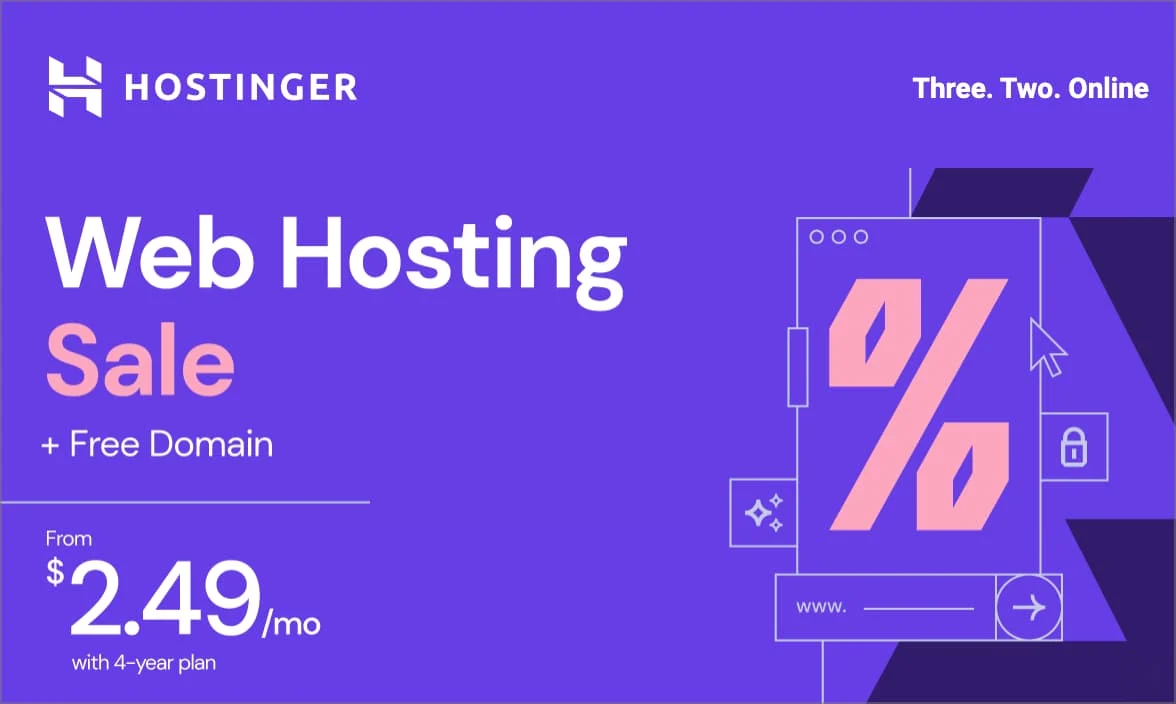
Get Hostinger’s Low-Cost Hosting Now!
Don’t miss out on affordable hosting with Hostinger – click now to bring your website online at an unbeatable price!



